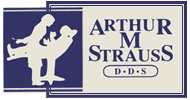Oral Appliance Therapy and Oral Systemic Balance
Management and Treatment of Sleep Apnea and the Round-the-Clock Impaired Oral Functions of Speaking, Swallowing and Breathing
In 1995 the Association of Professional Sleep Societies representing the segment of medicine associated with sleep and sleep disorders formally recognized that Oral Appliances are effective in the treatment of snoring and obstructive sleep apnea. These devices, similar in appearance to orthodontic retainers and athletic mouth guards are worn during sleep. The selection, custom design, fitting and then management of their use are referred to as: Oral Appliance Therapy.
A new generation of Oral Appliance Therapy referred to as Oral Systemic Balance, addresses impaired oral functions of speaking, swallowing and “breathing”, both when awake and when asleep. Here more sophisticated appliance designs and customization appear to have a greater and more far reaching impact upon ones breathing, sleep, ability to relax and their entire physical, mental, emotional and spiritual well-being.
For further information read on!
Obstructive Sleep Apnea
Obstructive sleep apnea, usually characterized by severe snoring, is now recognized as a life threatening disorder associated with higher rates of stroke, heart attack, and accidents that are often caused by excessive sleepiness while driving a motor vehicle. It also affects mental acuity, alertness and temperament leading to work impairment and social strife. Yet obstructive sleep apnea is often not diagnosed and, even when diagnosed, is often untreated or ineffectively or inappropriately treated.
Prevalence
It is estimated that more than 12 million Americans have obstructive sleep apnea. Sleep apnea is more common in men than women. One out of 25 middle-aged men and one out of 50 middle-aged women have sleep apnea. Impaired breathing and the incidence of obstructive sleep apnea increase with age.
CPAP
Although nasal continuous positive air pressure (CPAP), reputed to be the most effective method, is commonly the first approach to treatment of obstructive sleep apnea, it is poorly tolerated by about 30% of most patients during their initial trial. In addition, during the first three years of CPAP use, about 30% of the initial 70% of patients who began treatment with CPAP abandon it. Over 50% of sleep apnea patients cannot use nasal CPAP. Most find it intolerable, some find it inconvenient, and a few find it inadequate.
Surgery for OSA
Surgery, especially to the palate, tongue and throat has been affective 50% of the time at best, is irreversible and often times loses its effectiveness.
Oral Appliance Therapy for Obstructive Sleep Apnea
Oral appliance therapy (OAT), when appropriately practiced, provides a more predictable success rate than surgery, is reversible and considered more user-friendly than nasal CPAP.
The challenge of oral appliance therapy in the treatment of obstructive sleep apnea and in eliminating or significantly reducing snoring is dependent upon how it is practiced. Success depends on matching the most appropriate appliance, its fit, setting and method of use to the individual patient whose temperament, treatment goals, apnea characteristics, physical structures of their mouth, jaws and throat are unique to them.
Success is appropriately defined as maximal utilization of an appliance that is most effective in treating the sleep apnea and snoring with the least undesirable side effects.
Oral Systemic Balance
Traditional oral appliance therapy at its best delivers on this. The new generation of oral appliance therapy, Oral Systemic Balance® (OSB) Therapeutic Systems, developed by Farand C. Robson, D.D.S. OSB focuses on restoration of impaired oral function which primarily impacts speaking, swallowing and breathing. The observed results of OSB appear to have more profound and far-reaching effects than traditional OAT that is limited to and in the treatment of "obstructive" sleep disordered breathing. Even here OSB appears to surpass traditional OAT.
